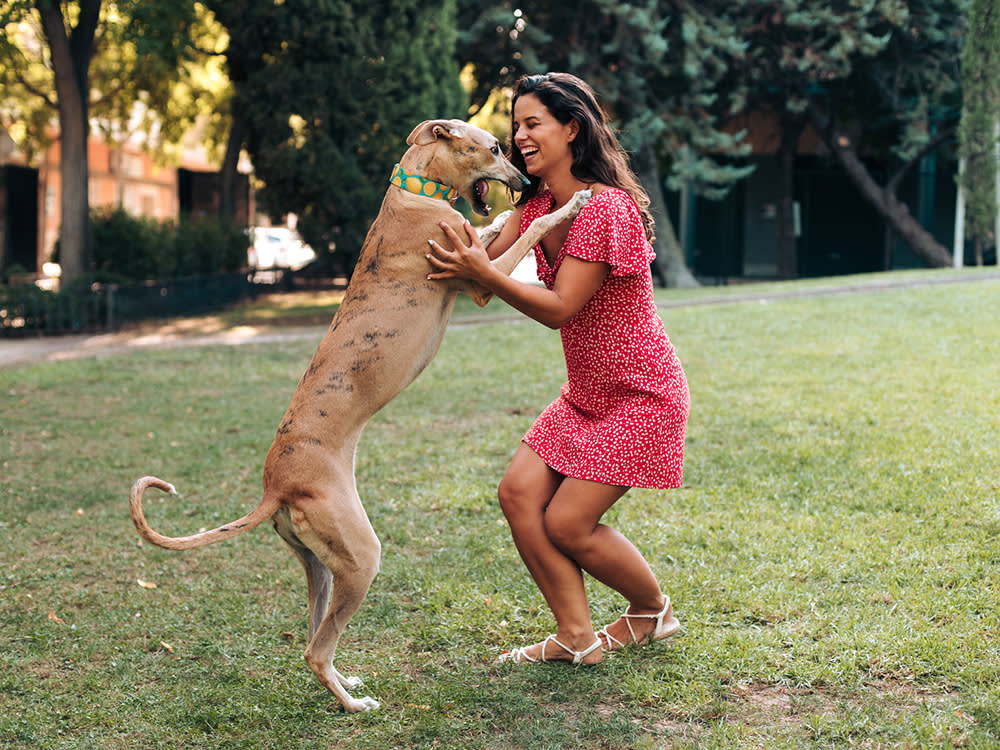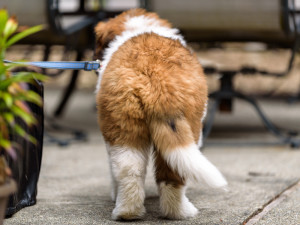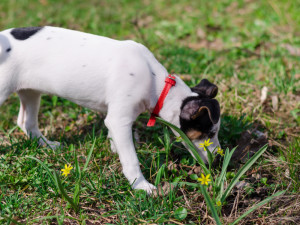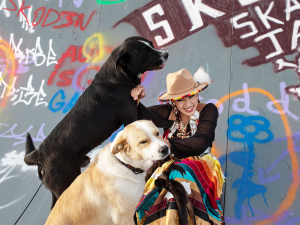How’s Your Dog Feeling? Check Their Tail
If your dog’s tail is wagging “to the left, to the left,” as Beyoncé says, it could mean they’re anxious.

Share Article
Your dog has moods. This doesn’t mean they’re moody or that you should stick a mood ring on their paw. (Please, do not make your dog wear jewelry; plus everyone knows those things are bogus.) But there is a pretty clear indication of what they’re feeling in any given moment: their tail.
The next time your dog greets you when you come home, closely watch their tail. A dog’s tail speaks volumes, whether it’s rigid or swishing circularly, or moving slowly or quickly. Now, add one more mood indicator to the list: the position and direction of a dog’s tail while it wags. Scientists have discovered that a happy dog will wag harder to the right, and an anxious dog will wag harder to the left.
Left and Right Brain
In humans, it’s well documented that the brain is divided into two cerebral hemispheres — left and right — which serve different functions and control opposite sides of the body. Most animals also demonstrate a difference between “left brain” and “right brain” functions. It is believed that the left brain in animals specializes in “approach and energy enrichment,” such as finding food. The right brain specializes in “withdrawal and energy expenditure,” such as fleeing in response to fear. Because the dog’s tail is located along the body’s midline, researchers questioned whether the tail displayed emotional asymmetry.
Thirty mixed-breed dogs served as the researchers’ subjects. Each dog was put in a kennel specially fitted with cameras to capture the precise angle of the dog’s tail movement. The dog was then shown four separate stimuli — their person, a stranger, a friendly cat, and an unfamiliar, intimidating dog — for one minute each.

Upon sight of their person, all 30 dogs wagged their tails more strongly to the right side. After a 90-second rest period, the dogs viewed a stranger. The dogs’ tails still favored the right side, but the angle was more moderate in comparison to seeing their person. The cat elicited a bias to the right side, but it was even more subtle than when they saw the stranger. The large, unknown dog caused all of the dogs to wag their tails more to the left.
Dog Tail Position Meaning
The authors concluded that when the dog felt positive, or curious (as in the case of the cat), the tail wagged right. If the dog felt negative or apprehensive, the tail wagged left. Because the left brain controls the right side of the body, the right muscles of the tail express those good feelings — the left muscles of the tail signal caution or concern, which is controlled by the right brain.
It’s always a good idea to observe your dog’s body language, whether you’re relaxing at the dog park or waiting to see the vet. Now, thanks to your dog’s tail, you have another way to tell how they really feel.

Julia Lane, CPDT-KA
Julia Lane owns Spot On K9 Sports, a training facility in the Chicago area, and offers online dog-sport coaching. She is the author of several travel books, and her byline has appeared in The New York Times Magazine, Poets & Writers and elsewhere.
Related articles
![Dog in high contrast lit hallway standing near a food bowl]()
Your Pet’s Behavioral Issues Might Be All in Their Gut
It’s a gut thing: Your dog’s GI issues could be linked to their mental health.
![Dog looking out a window in the winter]()
Winter Is Here—Can Your Dog Suffer Seasonal Depression?
Here’s why your pup may get the winter blues, too.
![A little puppy Jack Russell terrier is smelling the grass in the park with red dog-collar.]()
On Your Next Walk, Let Your Pup Follow Their Nose
A “sniffari” gives your dog a chance to be the boss.
![Paulina Alexis cover story]()
“She Is Me”: Paulina Alexis Sees Her Soulful, Fearless Self in ‘Reservation Dogs’
The rising star on saving stray animals on her reservation, her horse girl side hustle, and how her character connects with her roots in season 2.




